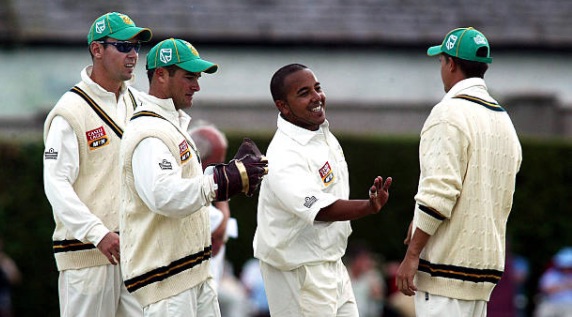The Social Justice and Nation Building (SJN) report was comprehensive and decisive but it is unlikely to bring meaningful change, writes RYAN VREDE.
Many times in the 235-page report demanded pause for careful consideration.
One was taken aback at the experiences of black players, like when wicketkeeper Thami Tsolekile was forced to sleep on a kitchen floor during a U13 tour in 1993, while white players slept comfortably at a nearby school. Tsolekile would later earn a national contract as Mark Boucher’s back-up, but would not play a single Test in his contracted period (2012-2014) as the team’s leadership decided AB de Villiers would keep, which he did until Quinton de Kock took over in 2014.
I was shocked when Paul Adams detailed a message on a WhatsApp group in 2020 from former South African cricketer Johann Louw in which Louw refers to former SA U19 coach Lawrence Mahatlane as a monkey (“Hoe lank gaan hulle nog daai aap daar hou?”).
Louw’s defence was to claim that he is Afrikaans and in this context, his words were formed “… in a way an Afrikaans person would utter his displeasure …”.
This is utterly disgusting and Louw should be prosecuted for hate speech.
Boucher, the current Proteas head coach, defended calling Adams a “brown shit” as part of a vile team song by explaining that many players, including whites, had racially-charged nicknames. He never submits which white players had these names or what they were. Just that they existed, and when understood in this context, Adams’ claims of racial abuse are overblown.
How Boucher still has a job with Cricket South Africa is beyond me.
It surprised me that, during a 2015 tour of India, AB de Villiers had so much power within the team that he was able to override national selection policies and get Dean Elgar into the squad, onto a plane, and straight into the ODI team within a couple of days. All at Khaya Zondo’s expense.
Zondo was promised he’d play in light of injuries to JP Duminy and Rilee Rossouw. That was until De Villiers’ intervention, which he denies had a racial bias, citing that it was explained to him that Zondo was only on the tour to “gain experience”.
He claims that injuries to Duminy and Rossouw demanded a top-order batter be picked and that Zondo wasn’t that. Testimony from various sources indicates that De Villiers was prepared not to play to get his way. This was a cowardly move from a player who knew his country needed him in a series-deciding match.
ALSO READ: AB hits back at race accusation
Yet, despite all these incidents, overall nothing in the report was particularly illuminating. The report highlights incidences of vast income disparities between white and black professional players, many circumstances of black players being denied, or only granted limited opportunities with numerous franchises and the national team, and a myriad of lamentations of a lack of adequate resources and facilities in black communities, which the report indicates completely undermines the goal of creating equal opportunities for advancement for black cricketers.
But if you’ve been paying attention, you would have known this.
It also unpacks the messy appointments of director of cricket Graeme Smith and head coach Boucher, who the report indicates was wholly less qualified to get the job than the assistant coach at the time, Enoch Nkwe. Smith, however, had his way and justifies it by citing Boucher’s domestic coaching record with the Titans, as well as his vast international experience.
ALSO READ: ‘Graeme Smith did not appoint himself’
But we already knew that CSA is home to a clutch of men and women who have zero understanding of, or zero respect for, sound governance processes.
Indeed, the most disconcerting thing about the recommendations in the report is that they require CSA to act in a decisive and visionary manner. It has been decades since CSA could be accurately characterised by using words such as decisive and visionary.
Cricket’s governing body does not have the competency to remedy the deep racial wounds in our cricket.
For the longest time, their primary strategy to balanced representation has been to implement transformation targets. Currently, domestic teams have to field at least six players of colour in every XI, of which at least three must be black African, and the national team must field at least six players of colour of which at least two must be black African.
Viewed in this context, it is no surprise that most black players continue to be directly and indirectly accused of not earning their place in the professional game’s highest levels.
Transformation targets is a band-aid over a gunshot wound. CSA has failed miserably in adequately resourcing grassroots cricket. The goal should always be to create as many environments as possible for talented black kids to grow in the game. Instead, they’ve largely relied on affluent schools to identify and develop black talent. This while an abundance of talent in the communities they have a mandate to invest in goes untapped.
The report makes recommendations on various policies and procedures that would help avoid or, at the very least, create greater awareness of the potential impact of scenarios like the ones described by black players, coaches and administrators in their testimony to the SJN.
Once again, I have serious reservations about CSA’s ability to apply any of these to a degree that results in meaningful change.
There is a leadership issue in South African cricket that makes the path forward unclear. Until that is fixed, the solid work done through the SJN process will be in vain.







